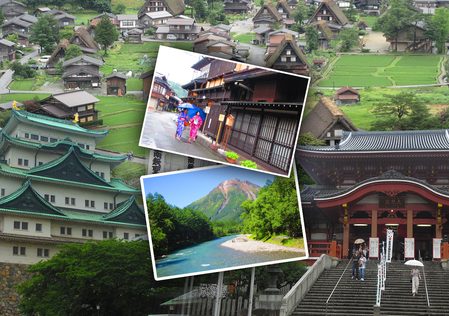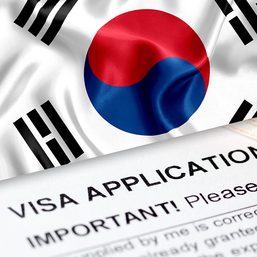SUMMARY
This is AI generated summarization, which may have errors. For context, always refer to the full article.
![[OPINION] ‘Ohitorisama’ and me](https://www.rappler.com/tachyon/2023/02/Ohitorisama.jpg)
If you can get Daisy Duck to notice you, you know you will be okay.
I was way beyond alright. It felt amazing. I almost blurted, “Oh, c’mon Daisy,” but then she finally relented. When I first saw the mascot, she was busy entertaining other fans. I asked for a photo, but her handler advised: “You have to call her ‘Hello, Daisy!’ so she’ll approach you.” In Manila, I teach English for a living, and I like to believe I am typically confident, both loved and feared by my students. But there I was at Tokyo DisneySea, sidelined and reduced to pathos, calling out (okay, begging) “Hello, Daisy!” about 10 times. It had taken me an hour, with a long walk, two subway train transfers, and a monorail ride, to reach Maihama from my hostel in Ueno. I was not about to surrender.
Thus, when Daisy came close and held my hand, oh, such joy it was! In our photo, she is resplendent in bright pink satin, while I am illuminated by my big smile. Donald Duck was nowhere to be found, but his absence is inconsequential. True to the essence of ohitorisama, Daisy is quite capable of having a delightful time by herself, and so do I.
Hiroshi Hiyama of Agence France-Presse reported that ohitorisama, the art of doing things alone, is a relatively new term. Coined to reflect the widespread preference for solitary activities, it is a manifestation of data on more than one-third of homes in Japan having solo dwellers. This is a large, profitable market, and ohitorisama is evident in business practices. For individual guests, privileges range from partitioned seats in theaters to special lanes, like at DisneySea where I got on rides faster than usual. The Koshikada chain has even found success in conceptualizing “1Kara,” a karaoke studio for one. For social scientists, the rise of “the supersolo society” has been noteworthy. Ohitorisama decreases the stigma of being alone, and alleviates the pressure to conform in such a collectivist society.
Visiting a theme park alone, for instance, may be unimaginable to many. Traveling abroad solo is even more terrifying. However, I have long realized that when loved ones are too busy to go, I could choose to enjoy my own company. It has been said that a person’s sense of journey is subjective, so maybe I did not leave at all.
In Japan, I am home. Ohitorisama feels like belonging to a secret club, with details so tightly-guarded I do not even know other members. I bear no password, yet it seems that everywhere, I am accommodated by design. There is always a space for me at the table, or in this case, at a booth in a restaurant, where I can savor both my ramen and my solitude. I can be comfy in my capsule at the hostel, and dream the sweetest of dreams, while fellow travelers occupy adjoining beds.
Smiles are plenty. No one raises an eyebrow, or asks inane questions (which often happens to me in the Philippines) even when I am on my own during a group walking tour in Asakusa. In fact, I find that people initiate conversations with me easily, when they would have been intimidated if I had a companion. Someone shared a tip about an observation deck with free entrance, and I ended the day with a magnificent view of Tokyo’s skyline. On trains, I am heartened whenever I see a child commuting to school alone, and fascinated that it is never too early to learn to befriend one’s shadow. Here, “me time” is not only a break for the weary, but also a lifestyle for so many.
Even traditional families appreciate ohitorisama. Kazuhisa Arakawa’s 2018 study showed that one in three married people enjoys solo pursuits like travel. BBC actually played it witty in that article, transitioning references from “party of one” to “parties of one.” Citing the work of another researcher, Motoko Matsushita, it charted ohitorisama’s growth as a blowback to that constant craving for acceptance, particularly on social media.
I recognize that a party of one may not often be in high spirits. I stayed at DisneySea until the fireworks show, and my late night almost cost me a trip to Mt. Fuji the next day. There was nobody to wake me early, or reassure me as I got disoriented at Shinjuku Station on my way to the meeting point. But I made it to the tour bus, and after two hours, I looked out, shocked to see Mt. Fuji looming in all her splendor.
She stood so strong and majestic. In her beauty I found comfort, knowing she was on her
own too. – Rappler.com
Maria Pia F. Luque teaches English at a private school. She is among the writers in the anthology Savor the Word, hailed Best Book of Leisure at the 32nd National Book Awards.
Add a comment
How does this make you feel?



![[OPINION] LGBT, mental health, and why Pride March is there](https://www.rappler.com/tachyon/2024/06/lgbt-mental-health-june-11-2024.jpg?resize=257%2C257&crop_strategy=attention)
![[Free to disagree] Ending victimhood](https://www.rappler.com/tachyon/2024/05/TL-Ending-victimhood-May-20-2024.jpg?resize=257%2C257&crop_strategy=attention)




![[WATCH] #ShareAsia: Winter flower viewing at Hasedera in Kamakura, Japan](https://www.rappler.com/tachyon/2024/03/hasedera-tcard-LS.jpg?resize=257%2C257&crop_strategy=attention)

There are no comments yet. Add your comment to start the conversation.